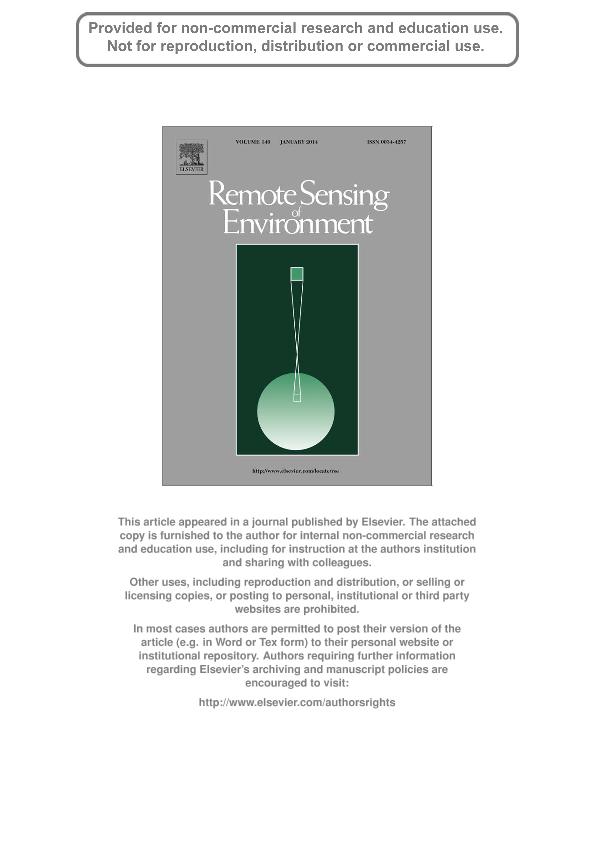Artículo
Comparison of different BRDF correction methods to generate daily normalized MODIS 250 m time series
Fecha de publicación:
01/2014
Editorial:
Elsevier Science Inc
Revista:
Remote Sensing Of Environment
ISSN:
0034-4257
Idioma:
Inglés
Tipo de recurso:
Artículo publicado
Clasificación temática:
Resumen
Realizing the full benefits of MODIS' temporal resolution requires, among others, the correction of the directional effect (i.e. the combined impact of the variation of the measurement geometry and of the observed land surface upon the registered radiant flux). While different BRDF methods have been proposed to address this effect, its performance has been evaluated at coarse spatial resolutions making it difficult to assess its applicability to, for example, crop monitoring. Here we test 2 approaches based on two different assumptions: the Classic approach that relies on the hypothesis of stable target and a recent Alternative that is based on the idea that despite reflectance magnitude may change rapidly, the BRDF shape varies slowly in time. Additionally, we segmented the growing season into different numbers of periods for the BRDF correction (a single period along the growing season, 3 periods based in phenology and 9–12 periods of fixed 16-days). The resulting 6 methods were compared over annual crops (wheat, maize and soybean) at 250 m spatial resolution from a site located in the Argentine Pampas. We used MOD and MYD 09 GQ and GA as inputs and compared the corrected daily red and infrared reflectances and the NDVI time series against the filtered benchmark (input time series with quality filters applied) by means of the high frequency variability (i.e. noise). We also tested whether corrected time series were better correlated with soybean PAR interception and biomass. Our results showed that methods' performance was more explained by the number of periods than by the approach (Classic or Alternative). Single period methods decreased noise by 52%, 55% and 4% for red, infrared and NDVI time series. The use of 3 periods improved the correction performance to 63, 64 and 24% for red, infrared and NVDI time series respectively, while the highest reductions (65, 68 and 32% for red, infrared and NVDI) were found with 16-day intervals (9–12 periods) considering a magnitude inversion process. Wheat displayed the lowest noise reduction compared to the other crops. BRDF parameters obtained from different methods were associated to crop structure, suggesting that they have biophysical meaning. The decrease in noise obtained with correction methods was translated into a better assessment of the fraction of intercepted PAR and biomass. These promising results suggest the possibility of extensive field crop monitoring at an unprecedented temporal resolution.
Archivos asociados
Licencia
Identificadores
Colecciones
Articulos(OCA PQUE. CENTENARIO)
Articulos de OFICINA DE COORDINACION ADMINISTRATIVA PQUE. CENTENARIO
Articulos de OFICINA DE COORDINACION ADMINISTRATIVA PQUE. CENTENARIO
Citación
de Abelleyra, Diego; Verón, Santiago Ramón; Comparison of different BRDF correction methods to generate daily normalized MODIS 250 m time series; Elsevier Science Inc; Remote Sensing Of Environment; 140; 1-2014; 46-59
Compartir
Altmétricas




